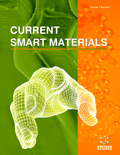Abstract
Background: A major concern of the current concrete structures technology is to develop systems that can monitor their own structural integrity condition in real time. This paper presents the development of a portable and innovative wireless damage monitoring system based on an alternative consideration of electromechanical impedance concept, integrating PZT sensors/actuators transducers into the concrete structures themselves.
Methods: The proposed wireless monitoring system for active sensing is designed, built, tested and provided with all capabilities needed to perform an integrity assessment by means of the use of a Raspberry Pi single-board microcomputer as the core hardware element to control the whole system function.
Results: It is found that the proposed alternative of the electromechanical impedance (EMI) technique associated with decision boundaries based on extreme value statistics is very sensitive to the damage introduced in concrete structures from their earliest stage. The tests run on the developed prototype prove that the proposed monitoring platform can actually be used to perform damage detection investigation with the required accuracy.
Conclusion: Its effectiveness and low cost make this platform a very promising contribution towards the implementation of large-scale wireless structural health monitoring applications.
Keywords: Concrete damage detection, electromechanical impedance method, extreme value statistics, Raspberry Pi, PZT sensor/ actuator.
 30
30 2
2





